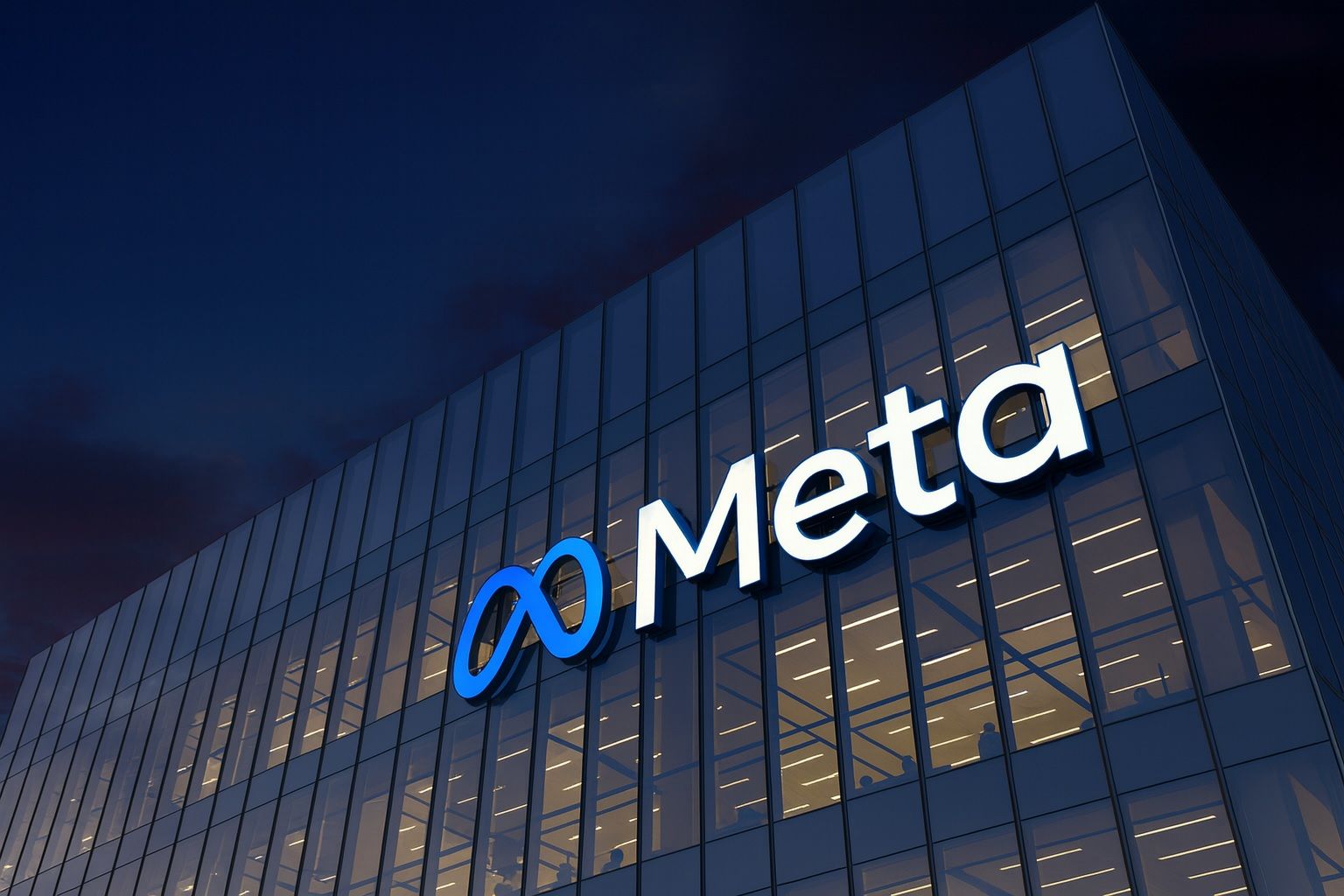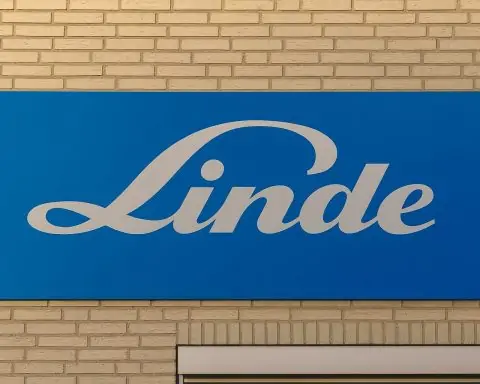- Revenue: Meta reported $51.24 billion in Q3 2025 revenue (up 26% YoY) [1], beating the ~$49.5 billion Wall Street had forecast [2]. Ad sales drove the gain – daily users averaged ~3.54 billion (+8% YoY) with ad impressions +14% and average ad price +10% [3] [4].
- Earnings per Share: GAAP EPS was just $1.05 [5], far below the ~$6.7 analysts expected [6]. This huge miss was due to a one-time, non-cash $15.93 billion tax charge, which pushed Meta’s effective tax rate to 87% [7]. Excluding that tax hit, adjusted EPS was $7.25 [8] – comfortably above estimates.
- Stock Reaction: Meta shares closed around $752 on Oct. 29 [9] (flat on the day but up ~27% over 12 months). However, the earnings shock sent the stock tumbling about 6% in after-hours trading. Analysts generally still view META as a buy, with 12‑month price targets roughly $825–$900 (≈10–20% above current) [10].
- Capex & Guidance: Q3 capital expenditures were $19.37 billion, and Meta raised its 2025 capex guidance to $70–72 billion [11] to build out AI data centers. For Q4, Meta guided revenue of $56–59 billion [12], expecting continued strong ad growth to offset a temporary slump in its Reality Labs VR/AR unit.
- Key Players: CEO Mark Zuckerberg highlighted the progress of new AI projects, saying “Meta Superintelligence Labs is off to a great start” and predicting the next few years “will be the most exciting period in our history” [13]. He also noted Meta’s AI-powered Ray-Ban smart glasses as the “main way we integrate superintelligence into daily life” [14]. CFO Susan Li echoed the theme, calling a recent $27 billion AI data-center joint venture a “bold step forward” for Meta’s AI plans [15].
Meta’s Q3 report was thus a mixed bag: revenue and ad metrics were strong, but headline profit was crushed by accounting nuances. As a press release noted, higher ad impressions (+14%) and prices (+10%) and growing daily users drove the top line [16] [17]. Operating income was healthy ($20.535 billion, ~40% margin) [18]. But the outsized tax charge – tied to new U.S. tax rules – depressed reported net income to just $2.71 billion and EPS $1.05 [19]. Management explained the charge arose from a valuation allowance on deferred taxes; excluding it, Q3 net income would have been $18.64 billion (EPS $7.25) [20] [21].
Behind the scenes, Meta’s broader strategy loomed large. The company has been pouring money into AI infrastructure – both hardware and talent. For 2025 Meta expects to spend roughly $70 billion+ on capex, a record amount [22]. Recent moves include recruiting top AI researchers (with enormous compensation packages) while cutting redundant AI lab jobs. Meta also inked a historic $27 billion joint venture with Blue Owl Capital to build a massive “Hyperion” AI datacenter [23]. CFO Susan Li said this will accelerate “frontier model development” and keep Meta’s AI “performance ahead of peers” [24]. These investments are long-term bets: Meta does not expect near-term revenue from them, but aims to anchor its own AI cloud infrastructure (rather than relying on rivals).
Analysts and investors were closely watching these AI bets. Many expect Meta’s ad business to continue powering growth while it invests heavily behind the scenes. For example, a DA Davidson note ahead of earnings predicted “Meta to continue outgrowing Google’s ad revenue” [25] even as Google faces tougher comps. Bank of America similarly sees Meta’s revenue climbing ~23% YoY in Q3 versus ~13% for Google [26], thanks to new AI-targeting ads and video. JPMorgan’s Doug Annuth echoed this bullishness: “Meta continues to execute well across its AI strategy & push toward personal superintelligence,” he wrote, maintaining an $875 price target [27]. CFRA Research added that consensus estimates look “well aligned” with Meta’s reality, thanks to its AI edge, and projected ~21–22% revenue growth for Q3 [28].
Tech industry commentators have also noted the stock’s momentum. Before earnings, TechStock² (TS2.Tech) reported that Meta’s shares were around the mid-$700s (roughly $740 on Oct. 27) after a ~25% YTD surge [29]. TS2 noted over 40 analysts rate META as a “Buy,” with year-ahead targets near the high-$800s [30]. Importantly, they highlighted Meta’s massive AI initiatives. For example, they quoted CFO Li saying the new data-center JV is “a bold step forward” for AI [31] – emphasizing that Wall Street isn’t just looking at near-term numbers but longer-term AI potential.
On the regulatory side, Meta has some challenges ahead too. The company warned that new EU rules (the Digital Markets/Services Acts) could impose restrictions on its ad practices. Analysts have pointed out that any changes to how Facebook and Instagram serve ads in Europe might hurt revenue down the line. But for now, Meta’s shareholders seem focused on the “AI arms race.” Meta CEO Zuckerberg continues to push a vision of “personal superintelligence” – empowering users with AI assistants – and the latest earnings provide mixed signals on when that might pay off.
Stock Forecast: Looking ahead, most Wall Street forecasts remain positive. Banks like HSBC and Stifel have $900 targets, DA Davidson and Oppenheimer $825 [32] [33]. Benzinga notes the consensus $825 target implies roughly 10% upside [34]. With Meta trading in the high-700s, many analysts expect the shares to outperform peers. They argue that even with high R&D and capex, Meta’s 20%-plus revenue growth and solid margins (around 40%) justify its valuation. One TS2 analysis points out Meta (and Alphabet) trade at P/Es under 30 – lower than many hyped AI plays [35] – suggesting the stock isn’t wildly overpriced given its growth.
In summary, Meta’s Q3 report underlines both strengths and stresses. The ad business is booming, but the earnings miss (mostly an accounting quirk) triggered a sell-off. CEO Zuckerberg and CFO Li are still betting heavily on AI, rolling out smart glasses and other devices while spending billions on infrastructure. Investors will now watch the October–December quarter, where management sees revenue of $56–59 billion [36]. If ad demand stays robust and the AI investments eventually translate into user engagement or new products, analysts are inclined to stay bullish on Meta’s stock. As one analyst put it, Meta’s “AI investments allow it to outpace the broader digital ad market,” setting it up for continued growth [37].
Sources: Meta’s Q3 results and guidance [38] [39]; analyst and market commentary [40] [41] [42] [43] [44] [45] [46] (see citations).
References
1. www.stocktitan.net, 2. www.businessinsider.com, 3. www.stocktitan.net, 4. www.stocktitan.net, 5. www.stocktitan.net, 6. ng.investing.com, 7. www.stocktitan.net, 8. www.stocktitan.net, 9. ng.investing.com, 10. ts2.tech, 11. www.stocktitan.net, 12. ng.investing.com, 13. www.stocktitan.net, 14. 247wallst.com, 15. ts2.tech, 16. www.stocktitan.net, 17. www.stocktitan.net, 18. www.stocktitan.net, 19. www.stocktitan.net, 20. www.stocktitan.net, 21. www.stocktitan.net, 22. www.stocktitan.net, 23. ts2.tech, 24. 247wallst.com, 25. www.businessinsider.com, 26. www.businessinsider.com, 27. www.businessinsider.com, 28. www.businessinsider.com, 29. ts2.tech, 30. ts2.tech, 31. ts2.tech, 32. ts2.tech, 33. ts2.tech, 34. ts2.tech, 35. ts2.tech, 36. ng.investing.com, 37. www.businessinsider.com, 38. www.stocktitan.net, 39. ng.investing.com, 40. www.businessinsider.com, 41. www.techbuzz.ai, 42. ts2.tech, 43. ts2.tech, 44. www.businessinsider.com, 45. 247wallst.com, 46. www.stocktitan.net










